Author: Gamals Ahmed, CoinEx Business Ambassador
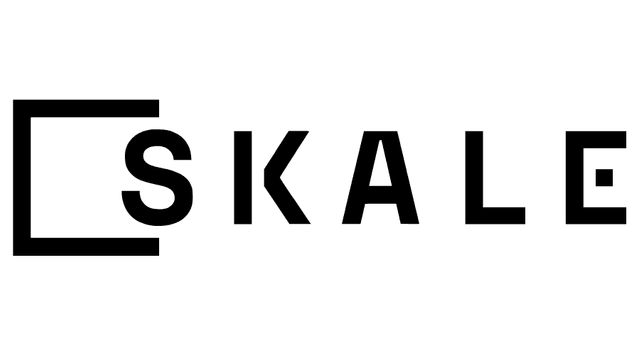
ABSTRACT
Decentralized networks allow for a new wave of business models and organizational structures to come to light. Their potential for societal and business impact have been well documented as have their shortcomings concerning performance, usability, and cost-effectiveness. The SKALE Network has been designed with the goal of resolving the technical scalability, user experience, and cost issues affiliated with decentralized networks such as Ethereum. In addition, SKALE is designed to bring application specific architecture to developers resulting in enhanced configurability and modularity.
SKALE proposes a decentralized, configurable network of on-demand blockchains that support high-throughput, low-cost, and low-latency transactions enabled with storage capabilities and advanced analytics. Additionally, SKALE proposes messaging protocols that enable participants to communicate between these disparate systems.
This system aims to provide Ethereum-as-a-Service to developers by providing a gasless subscription-based decentralized network for the provisioning and deployment of high-throughput, EVM-compatible, storage-enabled, provably secure byzantine fault tolerant blockchains.
The primary use for these blockchains are Ethereum-compatible elastic sidechains. Each proof-of-stake sidechain is highly configurable, comprised of nodes, which stake SKL tokens on the Ethereum mainnet, and leverages an asynchronous byzantine fault tolerant protocol for its consensus mechanism.
1. INTRODUCTION
The SKALE Network is a security and execution layer that connects with the Ethereum network and lets developers build their projects faster and with better performance. It is an elastic and decentralized blockchain network that supports thousands of independent blockchains, sidechains, storage chains, and other types of subchains — all tied to the Ethereum public mainnet. This network forms an execution layer in the form of high-performance chains that facilitate transactions based upon on-chain escrows.
The SKALE Network will eventually be comprised of thousands of independent validator nodes, which will offer the security guarantees of a Layer 1 blockchain network but use resources in a more efficient, performant, and versatile manner. One thousand validators in the SKALE Network, for example, can support 8,000 independent chains. These chains could range from the smallest of sidechains to very large public and private blockchains — each operating with faster commit times, lower transaction costs, and higher transaction throughput.
The SKALE Network is an Elastic and Decentralized Blockchain NetworkThat Ties Closely with the Ethereum Mainnet.

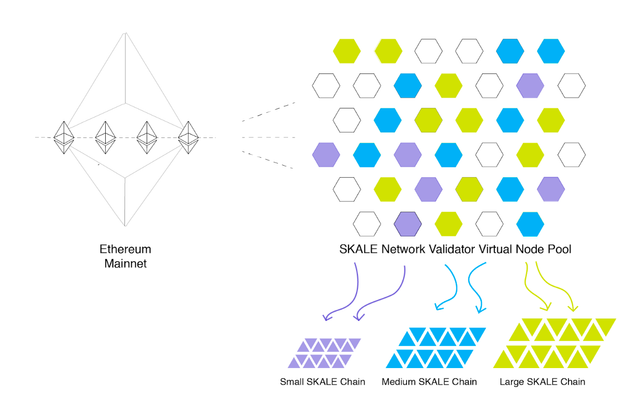 The SKALE Network with the Ethereum Mainnet
The SKALE Network with the Ethereum Mainnet
2. OVERVIEW ABOUT SKALE NETWORK
The SKALE Network is a high-throughput, low-latency, configurable byzantine fault tolerant, elastic blockchain network built interoperably with Ethereum. The initial and primary use case for this network will be in form of elastic sidechains for the Ethereum Blockchain. In this context, it can be described as an ‘Elastic Sidechain Network’.
SKALE Network is an L2 scaling solution for Ethereum, primarily aimed for scaling smart contracts. SKALE enables the creation of app-specific sidechains, which are secured by SKALE’s own validator set.
SKALE is an Ethereum-compatible network with a leaderless consensus designed to run on an uncapped number of independent nodes, each of which will be providing resources to multiple high performance decentralized elastic blockchains.
Sidechains in the network are operated by a group of virtualized subnodes selected from a subset of nodes in the network and are run on all or a subset (multitenancy) of each node’s computation and storage resources. Each sidechain is highly configurable, with consumers being able to choose their chain’s size, consensus protocol, virtual machine, parent blockchain, and additional security measures (e.g. virtualized subnode-shuffling frequency).
SKALE is a network of configurable, independent mini-chains (often called “dynamic shards”) that exists one layer above the Ethereum blockchain. These dynamic shards are capable of processing token transfers as well as decentralized applications (dApps). Each SKALE chain uses a randomly selected subset of the network’s validator pool to verify transactions and state changes.
The SKALE Network is an Ethereum-as-a-service platform that has been developed to support the “exponential” growth of the Ethereum (ETH) blockchain network and ecosystem. SKALE Network developers aim to “ease network traffic and significantly lower
transaction costs.” They claim that their efforts should help developers with bringing decentralized applications (dApps) to market that can “live up to the high consumer demands.”
EVM-compatibility within Elastic Sidechains allows dApp developers to deploy existing Ethereum-based smart contracts directly to them wile an increased gas limit lifts the computation and storage limitations of the Ethereum mainnet EVM.
The SKALE Network is comprised of permissionless SKALE Nodes and the SKALE Manager (located on Ethereum).
2.1 SKALE MANAGER
The SKALE Manager exists on the Ethereum mainnet and serves as the entrypoint to all other smart contracts in the SKALE ecosystem. This contract manages the orchestration of all entities within the network, inclusive of Elastic Sidechain creation / destruction, Node creation / destruction, withdrawals, and bounties.

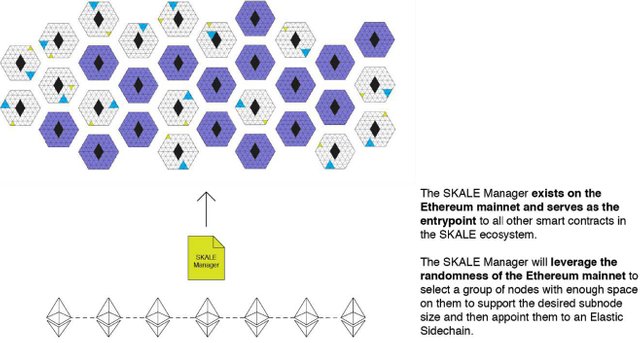 SKALE Manager
SKALE Manager
Chains derive their security from the SKALE Manager contract, which is secured by a pool of randomly appointed and frequently rotated validators. Among the early signed up validators are ChorusOne, StakedUS, BisonTrails etc.
2.2 TOOLS & COMPATIBILITY
SKALE Network is designed to work with all Ethereum compatible tools such as API-based wallets, and monitoring and analytics.
2.3 WHY THE SKALE NETWORK IS UNIQUE?
SKALE helps dApp developers speed up smart contract development and increase performance. SKALE is EVM-compatible and allows builders to make use of Ethereum’s existing developer tools.
The SKALE Network counteracts security risk by using a pooled validation model. This model leverages the security advantages offered by a large number of validator nodes by
combining random node assignments with frequent node rotation among the validator sets. Therefore, each independent sidechain is protected with the resources of the entire network.
To further secure the network, each validator must stake a significant amount of value into the network via a SKALE token. Sidechains are also resourced and provisioned by users via a subscription model that also makes use of the SKALE token. These tokens are staked into the Ethereum mainnet and controlled by smart contracts there. Smart contracts on the mainnet also manage the token inflation and the monthly payouts to validators (including proceeds from the inflation). These smart contracts also handle the monitoring of node performance as well as the provision of penalties in the event of any malfeasance by a node.
The SKALE Network is a custodial execution layer (Layer 2). Whereas non-custodial approaches use a system of fraud proofs to allow funds to move between chains, SKALE makes use of BLS signatures, deposit boxes within the Ethereum mainnet, and other mechanisms to allow for custodial ownership and use within the network (which allows it to leverage the security guarantees of the mainnet but gain the performance inherent in Layer 2). Whereas other Layer 2 models attempt to use mainnet interactions to run verification and/or fraud proofs, SKALE uses the Ethereum mainnet for staking and for other critical operations in a way that is better attuned for the creation of a robust and fully decentralized security and execution layer. The SKALE Network can also support non-custodial Layer 2 efforts via BLS Rollups and eventually will support other proven L2 solutions as they progress from research phase to production ready.
2.4 THE PROBLEM SKALE IS SOLVING
To increase adoption of Ethereum-based applications — and decentralized solutions in general — the industry needs to scale not just transaction throughput but also the user experience. Scaling the user experience means solving for transactions per second as well as solving for latency, connectivity to API-based wallets, cost-effectiveness, seamless messaging between chains, and much more.
The SKALE Network is an integral solution to blockchain scaling which addresses speed, security, ecosystem interoperability, AND transactions per second. A configurable network of elastic sidechains supports high-throughput and low-latency transactions without the high transaction costs found in public mainnets. The network offers expanded storage capabilities along with embedded connectivity and interchain messaging with the Ethereum mainnet. All of this is performed using a pooled transaction validation and security model that is efficient, scalable, and collusion-resistant.
The primary benefits are near-zero gas costs, faster commit times, and increased transaction throughput. Faster commit times translate into lower latency, which allows for a better user experience. Reduced gas costs benefits both developers and users and removes friction to mass adoption.
Elastic sidechains can also provide a significant amount of additional on-chain storage capacity for decentralized applications. Storing data on public chains is costly and limited whereas data storage within the SKALE Network is more extensive and economical thereby reducing the challenges app developers run into when addressing the storage needs of decentralized apps.
Using an Execution Layer solution like the SKALE Network is highly effective for building and scaling Ethereum-based applications, opening up the potential for an ever-expanding spectrum of use cases from games and decentralized finance to productivity and media applications and everything in between.

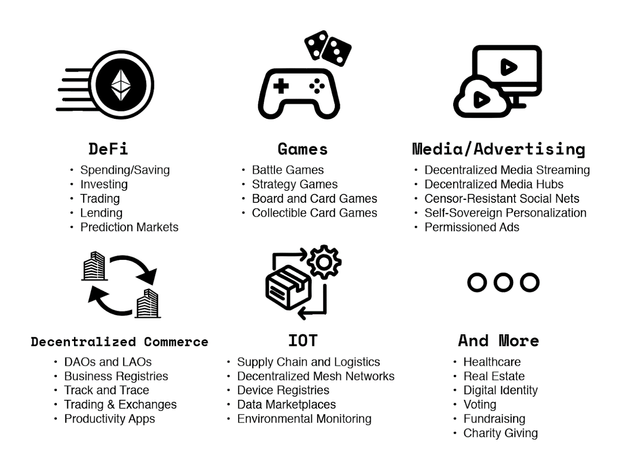 Use Cases for Elastic Sidechains
Use Cases for Elastic Sidechains
2.5 HOW DOES SKALE WORK?
The goal of SKALE is to enable dApps to access independent app-specific chains secured by SKALE’s validator set. In other words, app-specific sidechains purchase security from SKALE’s validator set.

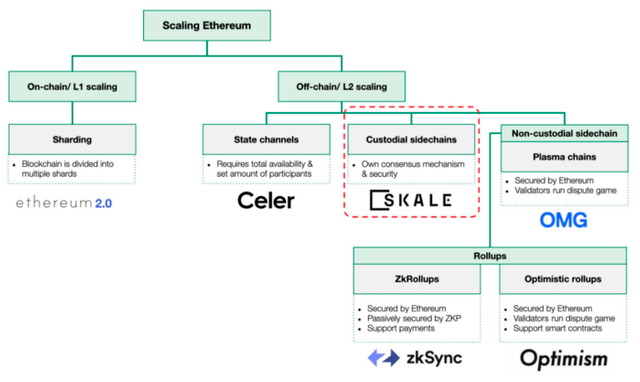
2.6 WHAT IS SKALE’S BUSINESS MODEL?
SKALE can be thought of as Ethereum-as-a-service. A dApp pays a subscription fee based on the resources it needs (computation, storage, and bandwidth) from SKALE’s validator set.
2.7 HOW DOES SKALE CONNECT TO ETHEREUM?
App-specific chains connect to Ethereum via the SKALE Manager smart contract that serves as the point of entry and exit. dApps deposit their tokens to the SKALE Manager smart contract, which mints corresponding tokens on the app-specific chain.
2.8 WHO IS BUILDING SKALE NETWORK?
SKALE Network is an open source Web3 platform intended to bring speed and configurability to blockchain. SKALE Network is the project by N.O.D.E. Foundation — the Lichtenstein Foundation that aims to advance development of Web3 technologies and make decentralized web more user friendly and accessible for developers, validators, and end users.
N.O.D.E. Foundation partners with SKALE Labs, and other top entities and investors around the world to facilitate development of SKALE Network.
SKALE Labs is the core team involved in creating the technology specs, creating the code, and growing use and awareness of the network. SKALE Labs is headquartered in San Francisco, California.
2.8.1 SKALE NETWORK TEAM
2.8.1.1 FOUNDERS
1. Stan Kladko, PhD: Co-Founder / CTO
Stan eats, breathes, and sleeps decentralization and cryptography. Prior to making it his life mission to help scale the blockchain, he spent many years attaining his PhD in Physics, spent 16+ years as a technology executive in Silicon Valley and has 18 years of cryptography experience. His resume includes Physics at Max Planck Institute, Los Alamos National Laboratory, and Stanford. SunMicrosystems Java Virtual Machine team, early 2000’s Crypto start-ups Ingrian Networks and The Crypto Lab, co-founder of Cloudessa and Galactic Exchange prior to starting SKALE. He is also an active member and contributor to the Ethereum Research Foundation.
2. Jack O’Holleran: Co-Founder / CEO
Jack’s passion for decentralized systems and blockchain led him to join efforts with Stan to solve the blockchain scalability problem. He is a veteran Silicon Valley Technology entrepreneur with a deep background in machine learning/AI technologies, and blockchain. His resume includes co-founder of Aktana, co-founder IncentAlign, and executive positions at Good Technology, and Motorola. His first work with Digital Currencies was in 2008 building a digital currency platform for Enterprise Resource Allocation. He has been an active Cryptocurrency investor and an evangelist for decentralized systems since early 2013.
2.8.1.2 OTHER SKALE NETWORK TEAM

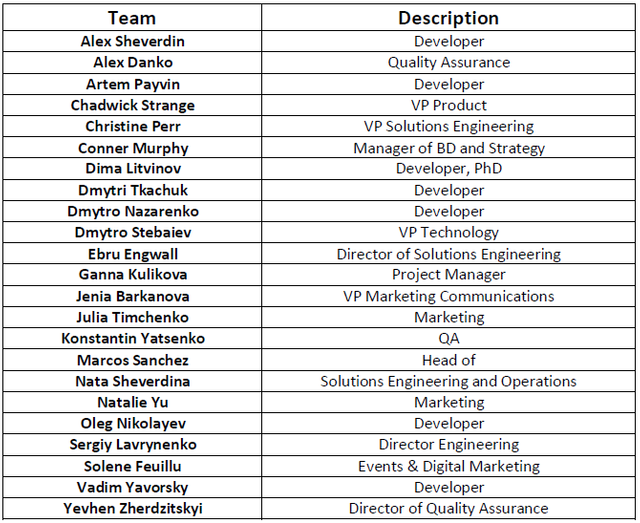
2.7 SKALE NETWORK & FINOA
Ethereum as a Service Platform SKALE Network to Use Custody Support Services from Finoa for SKALE’s Native Token
Finoa has partnered with Skale Labs in order to offer institutional-grade custody support for SKALE, which is the native token that’s used to power the SKALE Network.
The SKALE Network is an Ethereum-as-a-service platform that has been developed to support the “exponential” growth of the Ethereum (ETH) blockchain network and ecosystem. SKALE Network developers aim to “ease network traffic and significantly lower transaction costs.” They claim that their efforts should help developers with bringing decentralized applications (dApps) to market that can “live up to the high consumer demands.”
As stated in a release shared with Crowdfund Insider:
“With a sophisticated and effective approach to Proof of Stake, combining a pooled validation model with random note selection and frequent note rotation, the SKALE Network ensures that it is scalable, secure, and economically efficient. A testament to that is SKALE’s recent Phase 2 mainnet launch that went live with over $80 Million in Total Value Locked, resulting in one of the most distributed decentralization efforts at the launch of a blockchain network to date.”
The announcement further noted that Finoa will be offering professional investors an opportunity to stake their allocations and “deliver security to the SKALE Chains in a seamless, safe, and secure manner directly from Finoa’s secure infrastructure.”
CEO of SKALE Labs Jack O’Holleran stated that offering blockchain network participants an ecosystem of suitable products for every interaction is “incredibly” important to the SKALE Community which is why working cooperatively with Finoa made “a lot of sense.”
The release also mentioned that Finoa’s user-friendly digital asset custody solution will aim to offer SKL token investors a “secure” and “compliant” way to hold and manage their assets, while being able to access them easily for use within the network.
Finoa Co-Founder and Co-CEO Christopher May remarked:
“In collaboration with Skale Labs, we are excited to add another promising project to our platform and enable investors to securely store and stake their SKALE tokens with us.”
May added that the SKALE Network’s high-performance architecture aims to solve some of the speed and network congestion problems with the Ethereum blockchain. He also noted that it offers developers a set of tools to “power the next wave of innovative applications.”
Finoa is a regulated custodian for crypto-assets. The company provides services to professional investors with Custody and Staking. The Finoa platform allows users to store and manage their digital assets in a secure manner. The company claims its services are “highly intuitive” and offer a “unique” user-experience, allowing “seamless” access to the ecosystem of decentralized finance (DeFi).
Finoa claims that it works with established VC firms, large corporations and financial institutions. Founded in Berlin in 2018, the company has received a “preliminary” crypto-asset custody license and it’s being supervised by the German Federal Financial Supervisory Authority (BaFin).
Finoa claims that it works with established VC firms, large corporations and financial institutions. Founded in Berlin in 2018, the company has received a “preliminary” crypto-asset custody license and the German Federal Financial Supervisory Authority (BaFin) is supervising it.